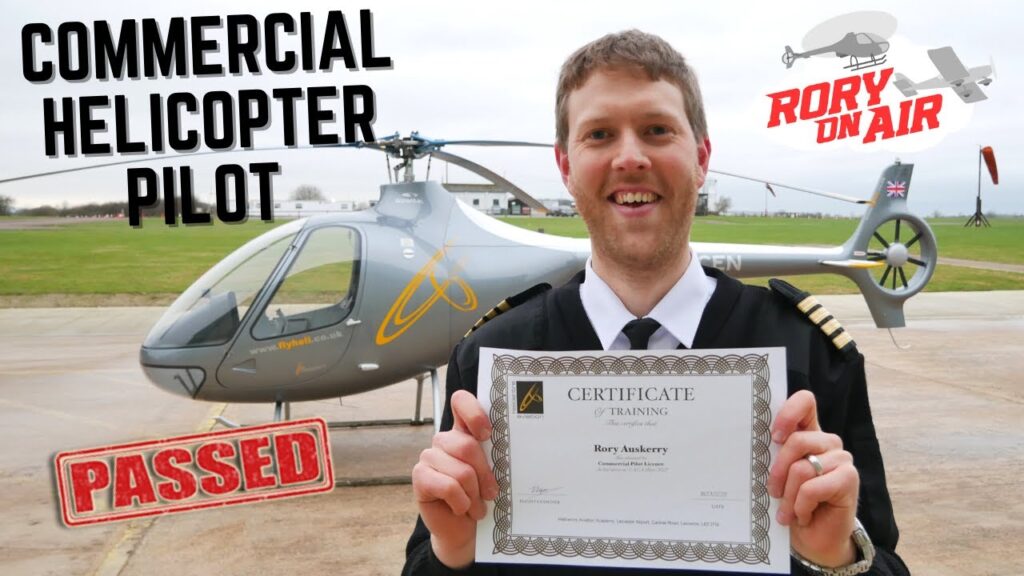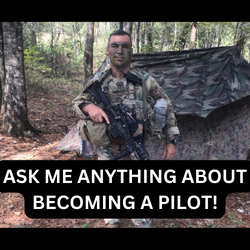
Have you ever wondered how long it takes to become a commercial helicopter pilot? If so, you’ve come to the right place. In this article, we’ll delve into the details of the training and certification process and give you a comprehensive understanding of the time it takes to become a commercial helicopter pilot.
Becoming a commercial helicopter pilot is no small feat. It requires dedication, perseverance, and a significant investment of time. In general, the training process can take anywhere from six months to two years, depending on various factors. These factors include the type of training program you choose, the availability of flight instructors, and your own level of commitment and progress.
During your training, you’ll learn a wide range of skills, including flight planning, navigation, aircraft systems, emergency procedures, and aviation regulations. You’ll also need to accumulate a certain number of flight hours, typically around 150 to 200, depending on the jurisdiction. Additionally, you’ll need to pass written exams and practical flight tests to obtain your commercial pilot’s license.
So, if you’re considering a career as a commercial helicopter pilot, be prepared for the time and effort it takes to achieve this goal. In the following sections of this article, we’ll provide more detailed information on the specific steps and requirements involved in becoming a commercial helicopter pilot. Stay tuned to learn more! Becoming a commercial helicopter pilot is an exciting career path that requires dedication, hard work, and a passion for flying. However, it is important to understand that the road to becoming a commercial helicopter pilot is a journey that involves several steps and requirements. In this article, we will outline the requirements and the time it takes to become a commercial helicopter pilot.

Requirements for Becoming a Commercial Helicopter Pilot
Age Requirement
To become a commercial helicopter pilot, you must be at least 18 years old. This age requirement is set by regulatory authorities to ensure that individuals have reached a certain level of maturity and responsibility before pursuing a career in aviation.
Education Requirement
While there is no specific educational requirement to become a commercial helicopter pilot, a high school diploma or equivalent is typically needed. Additionally, some flight schools may require pilots to have a certain level of education in subjects such as math and physics.
Physical Fitness Requirement
Being physically fit is crucial for a career as a commercial helicopter pilot. You will need to undergo a medical examination and obtain a Class 1 medical certificate, which is issued by an aviation medical examiner. This certificate confirms that you are physically and mentally fit to operate as a commercial pilot.
Selection of a Flight School
Once you meet the basic requirements, the next step is to choose a flight school that can provide the necessary training to become a commercial helicopter pilot. The selection of a flight school can greatly impact your training experience and future career opportunities.
Researching Flight Schools
Start by researching different flight schools in your area or those that you are willing to relocate to. Look for schools that have a good reputation, experienced instructors, and a comprehensive curriculum. You can also read reviews and testimonials from past students to get an idea of their training experience.
Visit and Evaluate Flight Schools
After narrowing down your options, it is recommended to visit the flight schools in person. During your visit, talk to instructors and staff members, take a tour of the facilities, and ask questions about the training programs, equipment, and resources available. This will help you assess the quality of the flight school and determine if it aligns with your goals and expectations.
Consider Price and Location
When choosing a flight school, consider the cost of training and its location. The cost of training can vary significantly depending on the school and the training program you choose. Take into account not only the upfront cost but also any additional expenses such as housing, transportation, and material fees. Additionally, consider the location of the flight school and whether you are willing to relocate for your training.

Obtaining a Private Pilot License (PPL)
Before pursuing a commercial helicopter pilot license, you must obtain a private pilot license (PPL). The PPL serves as the foundation for your training and provides you with the necessary skills and knowledge to operate a helicopter safely.
Enroll in Ground School
To begin your training, you will need to enroll in a ground school program. Ground school covers topics such as aerodynamics, aircraft systems, meteorology, navigation, and regulations. It is important to thoroughly understand these concepts as they form the basis of your flight training.
Complete Ground School Training
The duration of ground school can vary depending on the flight school and the training program. Typically, ground school can take anywhere from a few weeks to a few months, depending on the intensity of the program and the pace at which you are able to absorb the material.
Pass the PPL Knowledge Exam
After completing ground school, you will need to pass a written knowledge exam. This exam tests your understanding of the topics covered in ground school and is administered by the aviation authority in your country. It is important to thoroughly study and prepare for this exam to ensure success.
Flight Training with an Instructor
Once you have passed the knowledge exam, you can begin your flight training with a certified flight instructor. Flight training consists of both dual instruction, where you fly with an instructor, and solo flights, where you practice on your own under the supervision of an instructor.
Pass the PPL Practical Test
After completing the required flight hours and demonstrating proficiency in various maneuvers and procedures, you will be eligible to take the PPL practical test. This test includes a flight portion where you demonstrate your flying skills and a oral portion where you are tested on your knowledge of aviation regulations and procedures.
Obtain Night and Cross-Country Flight Experience
To qualify for a commercial pilot license, you will need to obtain a certain amount of flight experience, including night and cross-country flight hours. Night flight experience involves flying during nighttime hours, while cross-country flight experience involves flying to different destinations. These experiences help you build the necessary skills and confidence to operate as a commercial helicopter pilot.
Building Flight Experience
After obtaining your PPL, you will need to build flight experience to meet the requirements for a commercial pilot license. Building flight experience involves accumulating a certain number of flight hours, obtaining additional ratings, and gaining experience as a flight instructor.
Flight Time Requirements
To qualify for a commercial pilot license, you will need to accumulate a minimum of 150 flight hours, including specific flight time requirements such as cross-country flights and night flights. Keep in mind that these are minimum requirements, and it is common for commercial helicopter pilots to have many more flight hours before obtaining their license.
Flight Instructor Training
One way to gain flight experience and build hours is by becoming a flight instructor. By obtaining a flight instructor rating, you can teach others how to fly, which allows you to log additional flight hours while sharing your knowledge and skills with aspiring pilots.
Building Hours as a Flight Instructor
As a flight instructor, you will gain valuable experience by teaching students and logging flight hours. Building hours as a flight instructor is an important step in your career as it not only helps you meet the flight time requirements for a commercial pilot license but also allows you to refine your skills and build a solid foundation of knowledge.
Joining Commercial Airline Programs
Another way to build flight experience is by joining commercial airline programs or becoming a commercial helicopter pilot for various organizations. These programs often provide opportunities for pilots to gain experience in a professional setting, such as aerial tours, offshore operations, or emergency services.

Commercial Pilot License Application
Once you have met the flight time requirements and gained sufficient experience, you can apply for a commercial pilot license (CPL). The CPL allows you to fly helicopters for compensation or hire, opening up possibilities for a career as a commercial helicopter pilot.
Gather Required Documentation
Before applying for the CPL, you will need to gather the required documentation. This typically includes your logbook with the required flight hours, medical certificates, knowledge exam results, and any other documents required by the aviation authority.
Apply for the Commercial Pilot License
Once you have gathered the necessary documentation, you can submit an application for the CPL to the aviation authority in your country. This process may involve submitting your application online or through a designated office and paying the required fees.
Pass the CPL Knowledge Exam
Similar to the PPL, you will need to pass a written knowledge exam as part of the CPL application process. This exam typically covers topics related to helicopter operations, flight planning, navigation, regulations, and meteorology. Thorough preparation and study is essential to succeed in this exam.
Commercial Pilot License Flight Training
After completing the necessary paperwork and passing the knowledge exam, you will need to undergo CPL flight training. This training builds upon your previous flight experience and focuses on advanced maneuvers, emergency procedures, and the practical application of aviation knowledge.
Pass the CPL Practical Test
The CPL practical test is the final step in obtaining your commercial pilot license. This test includes a flight portion where you will demonstrate your flying skills and a oral portion where you will be tested on your knowledge of aviation regulations and procedures. Successful completion of this test is necessary to obtain your CPL.
Obtain the Commercial Pilot License
Once you have successfully passed the CPL practical test, you will be issued your commercial pilot license. The CPL allows you to fly helicopters for compensation or hire and opens up opportunities for a career in various sectors of the aviation industry.
Obtaining an Airline Transport Pilot License (ATPL)
While a CPL allows you to work as a commercial helicopter pilot, many pilots aspire to obtain an airline transport pilot license (ATPL). The ATPL is the highest level of pilot certification and is required to fly as a captain or first officer for an airline.
Obtain Sufficient Flight Hours
To qualify for an ATPL, you must have accumulated a minimum number of flight hours, usually ranging from 1,200 to 1,500 hours, depending on the aviation authority. These flight hours are typically obtained through a combination of flight instruction, commercial piloting, and other types of flying experiences.
ATPL Theory Exam
Before pursuing ATPL flight training, you will need to pass a comprehensive theory exam. This exam covers a wide range of subjects, including aircraft systems, navigation, meteorology, aviation regulations, and human factors. The ATPL theory exam requires extensive preparation and a solid understanding of aviation principles.
ATPL Flight Training
After successfully completing the ATPL theory exam, you can begin your ATPL flight training. This training focuses on advanced flight maneuvers, procedures, and decision making. It is designed to further enhance your flying skills and prepare you for the responsibilities of flying as a captain or first officer in an airline.
Pass the ATPL Practical Test
The final step in obtaining an ATPL is to pass the practical test. This test evaluates your flying skills, decision making abilities, and knowledge of airline procedures. Successful completion of this test demonstrates your competence and qualifies you for an ATPL.
Obtain the ATPL
Once you have passed the ATPL practical test, you will be issued an airline transport pilot license. This license allows you to work as a captain or first officer for an airline and opens up opportunities for a career in the commercial aviation industry.

Gaining Experience as a Commercial Helicopter Pilot
After obtaining your commercial pilot license, it is important to gain experience in different flying conditions and consider specializing in a specific field. This will not only help you further develop your skills but also increase your employability and open up opportunities for career advancement.
Gain Experience in Different Flying Conditions
Flying in different weather conditions and environments is essential for becoming a well-rounded pilot. Consider gaining experience in challenging weather conditions, such as strong winds or low visibility, and flying in different types of terrains, such as mountains or urban areas. This will help you develop the necessary skills and confidence to handle various situations.
Specialize in a Specific Field
Consider specializing in a specific field of helicopter flying, such as aerial firefighting, search and rescue, offshore operations, or law enforcement. Specializing allows you to focus your training and experience on a specific area, making you more valuable and marketable in that field.
Expand Skills through Additional Courses and Certifications
Continuing education and training are essential for career growth as a commercial helicopter pilot. Consider taking additional courses or obtaining certifications in areas such as instrument flying, advanced navigation, or helicopter type ratings. These additional qualifications will further enhance your skills and increase your employment opportunities.
Job Application and Interview Process
When you feel ready to pursue job opportunities as a commercial helicopter pilot, it is important to build an impressive pilot resume and prepare for pilot interviews. Additionally, networking and building industry connections can greatly enhance your chances of securing employment.
Build an Impressive Pilot Resume
Your pilot resume should highlight your flight experience, certifications, training, and any specialized skills or qualifications. Include relevant details about your flight hours, types of helicopters flown, and any notable accomplishments or achievements. A well-crafted resume will make you stand out to potential employers.
Prepare for Pilot Interviews
Prepare for pilot interviews by researching the company you are interviewing with, familiarizing yourself with their operations and fleet, and practicing your interview skills. Be prepared to answer questions about your flight experience, decision-making abilities, and knowledge of aviation regulations. Additionally, have a list of questions prepared to ask the interviewer, demonstrating your interest and enthusiasm for the position.
Networking and Industry Connections
Networking is an important aspect of the job application process. Attend aviation conferences or events, join professional organizations, and connect with other pilots and industry professionals. Building relationships and connections within the aviation industry can lead to job opportunities and valuable advice from experienced professionals.

Conclusion
Becoming a commercial helicopter pilot requires dedication, hard work, and a commitment to ongoing learning and improvement. The journey to becoming a commercial helicopter pilot involves meeting the age and educational requirements, selecting a flight school, obtaining a private and commercial pilot license, building flight experience, and going through the job application process. While the exact time it takes to become a commercial helicopter pilot may vary based on individual circumstances and training programs, it typically takes several years of training and experience accumulation. However, the challenges and rewards of this profession make it a fulfilling and exciting career choice for those passionate about aviation and flying.


